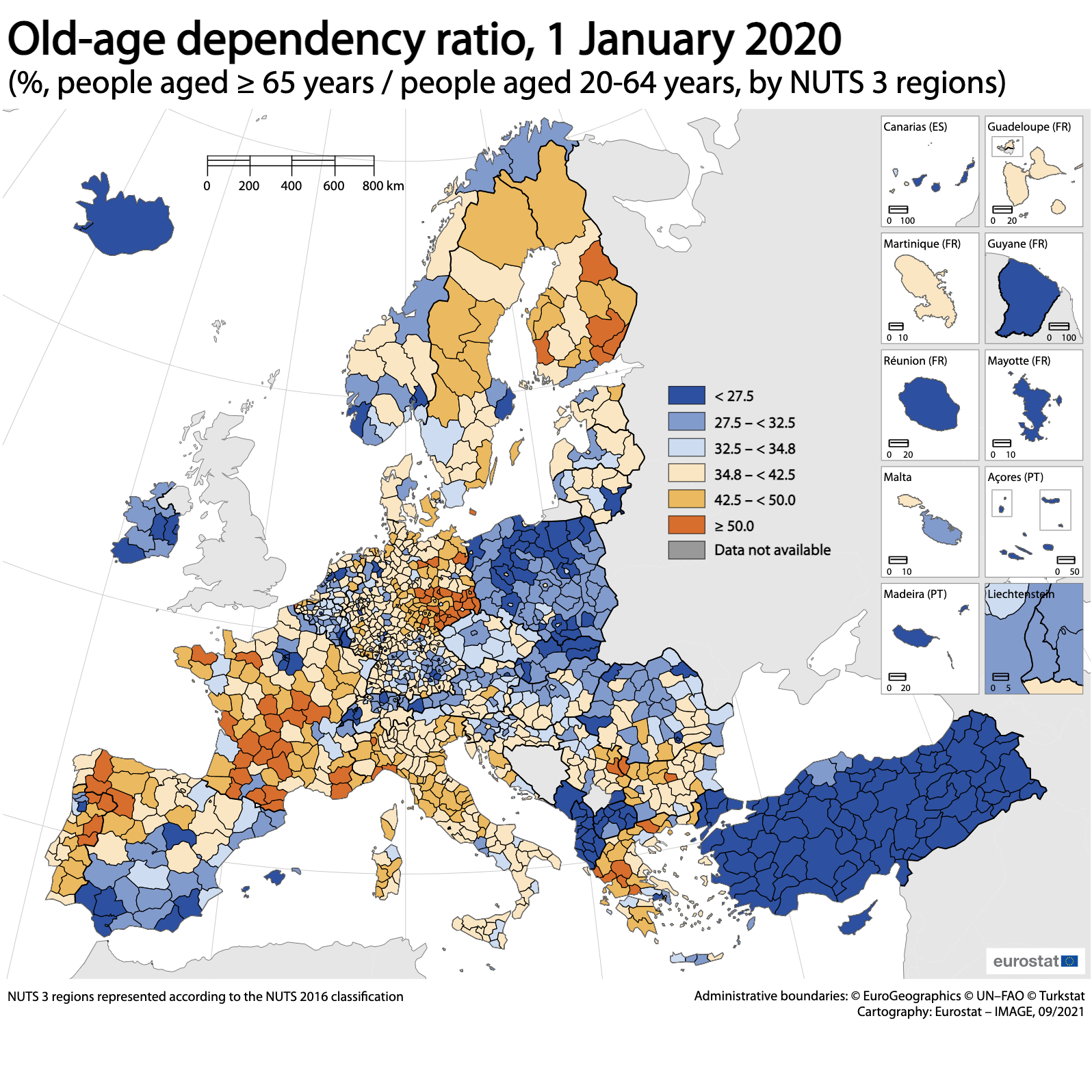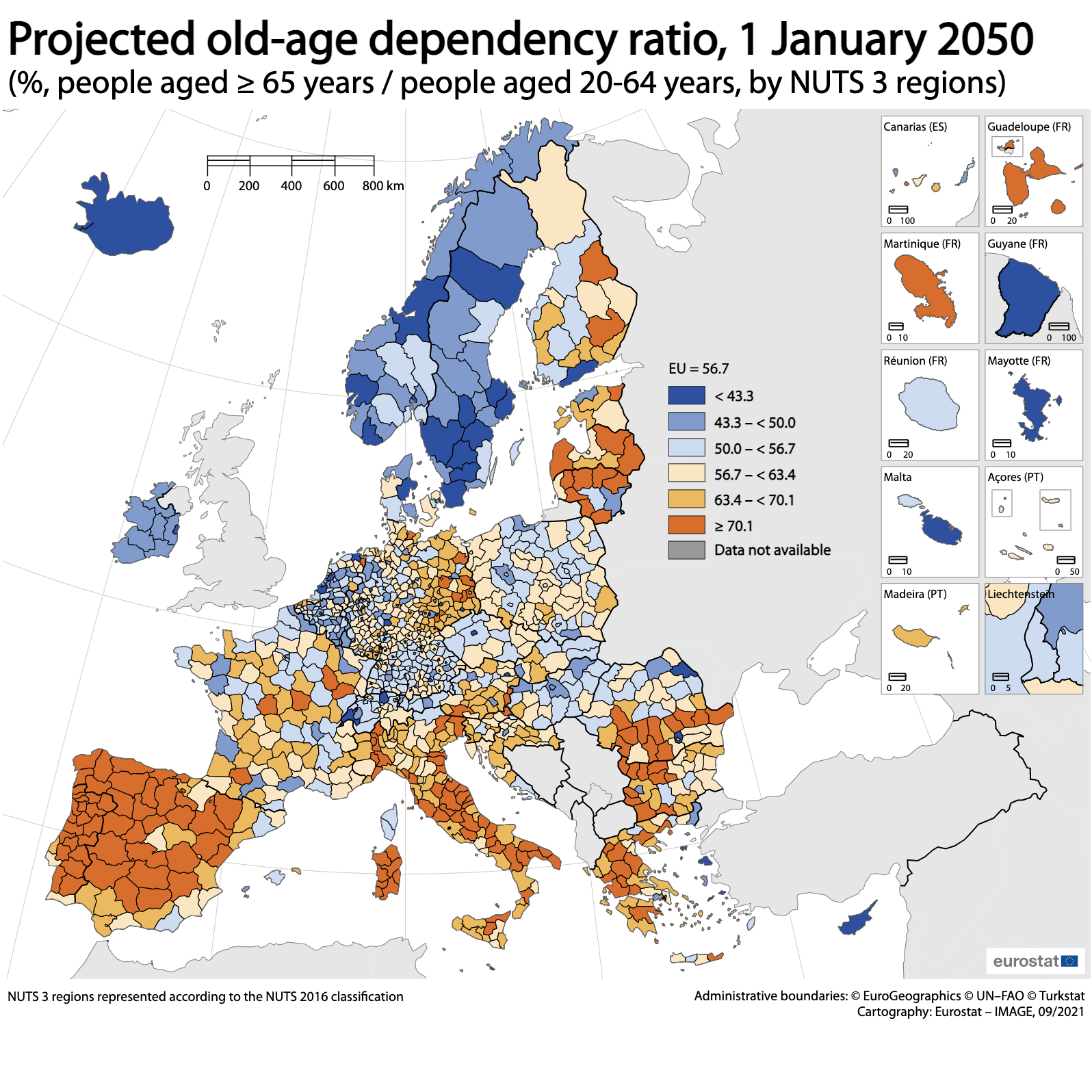The old-age dependency ratio in the EU has increased noticeably in the last 20 years. In 2001, the EU’s old-age dependency ratio was 25.9%, meaning there were slightly fewer than four adults of working age (20-64) for every person aged 65 years or more. Fast-forward to 1 January 2020, the ratio increased to 34.8%, meaning there were slightly fewer than three adults of working age for every person aged 65 years or more.
As of 1 January 2020, some of the highest ratios were concentrated in eastern Germany, Greece, Spain, France, Italy, Portugal and Finland. Most of these regions were predominantly rural, mountainous, or relatively remote, where it is likely that younger people have left the region to continue their studies or look for jobs.
Source: Regional yearbook 2021, chapter 1: Population at regional level (map 3)
Among the EU regions, Evrytania, a mountainous region in central Greece, recorded the highest old-age dependency ratio (78.3%). This region was followed by the north-western Belgian region of Arr. Veurne (64.6%) and the German region of Suhl, Kreisfreie Stadt (61.3%).
In contrast, the lowest ratios in the EU were recorded in the French outermost region of Mayotte (6.1%) and Guyane (11.7%) and the Spanish region of Fuerteventura (16.5%).
30-year projection shows overall ratio increase
Over the next three decades, old-age dependency ratios are projected to increase in all 1 169 EU regions, except for Harz, the westernmost region of Sachsen-Anhalt, in Germany.
At EU level, the ratio is projected to reach 56.7% by 1 January 2050, when there will be fewer than two working-age adults for each elderly person. The projections indicate that the old-age dependency ratio will have risen to at least 50% in the vast majority (974) of EU regions.
Source dataset: proj_19rdbi3 and proj_19ndbi
Would you like to know more about old-age dependency in the different EU regions?
You can read more in the dedicated chapter of the Eurostat regional yearbook 2021 as well as in the corresponding maps in the Statistical Atlas.
For more information:
- Eurostat regional yearbook - 2021 edition, also available as a set of Statistics Explained articles
- EUROPOP2019 – Population projections, overview page on Eurostat website
- Regions and cities, overview page on the Eurostat website
- Eurostat Statistical Atlas
- Eurostat Regions and cities illustrated
- Eurostat application “My Region” (web and mobile app)
To contact us, please visit our User Support page.
For press queries, please contact our Media Support.



